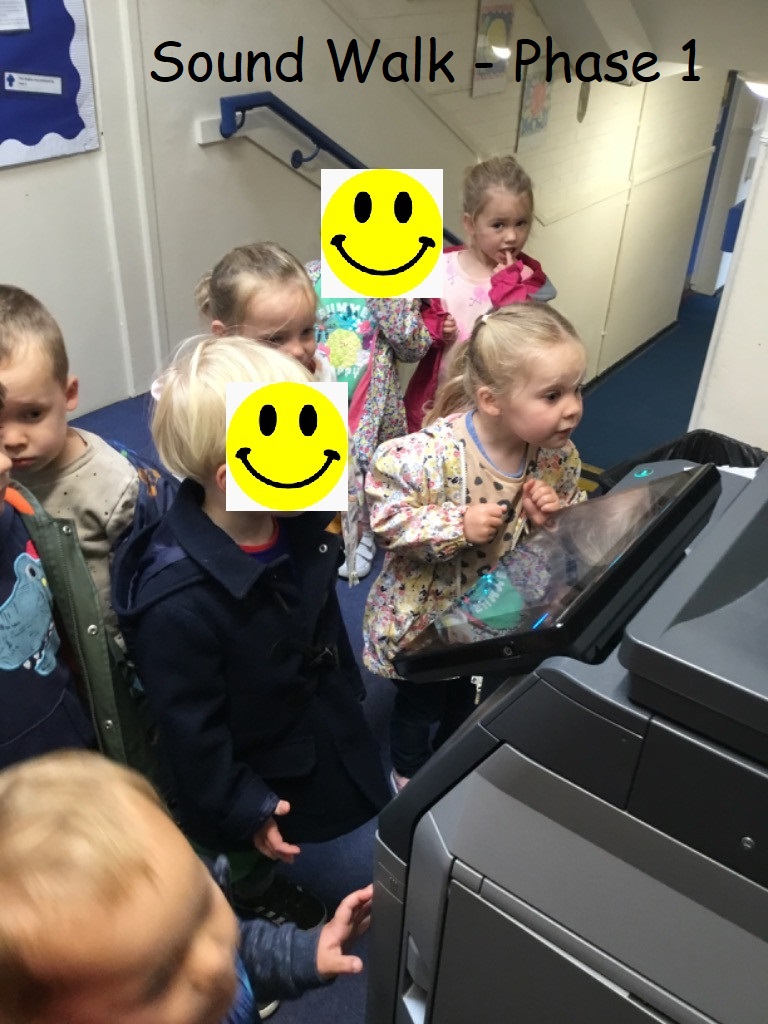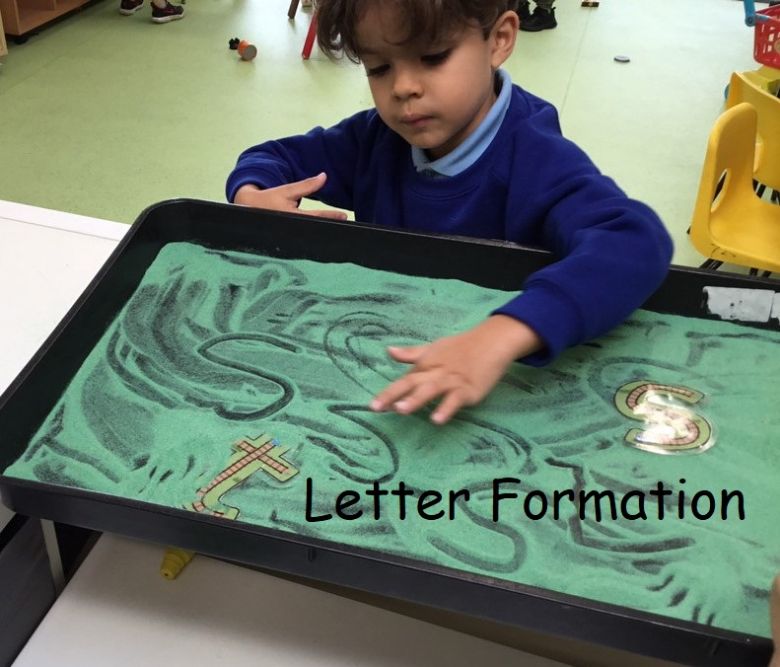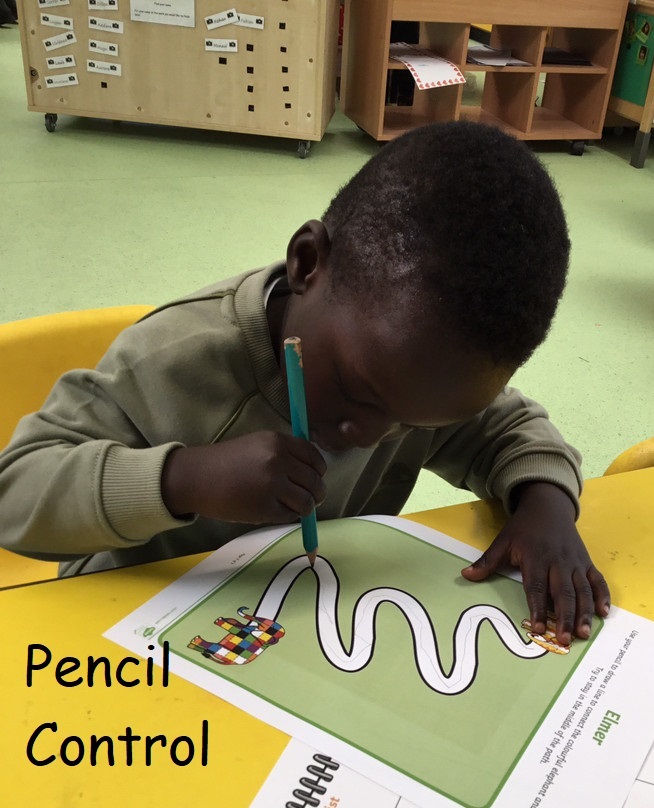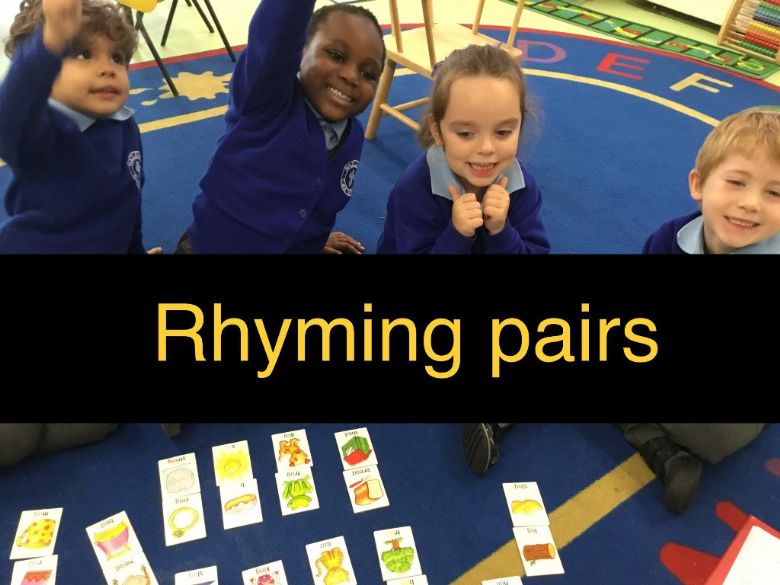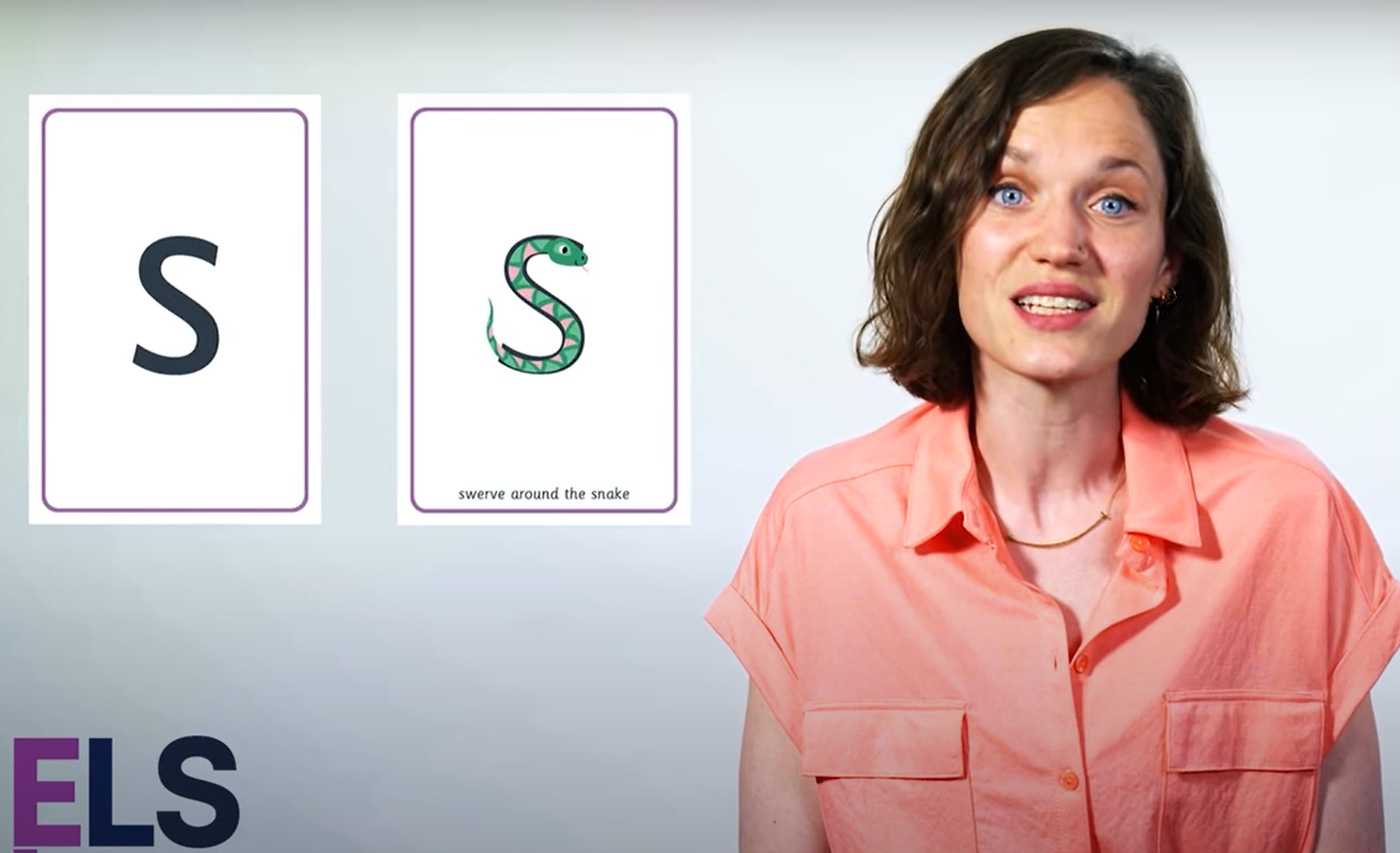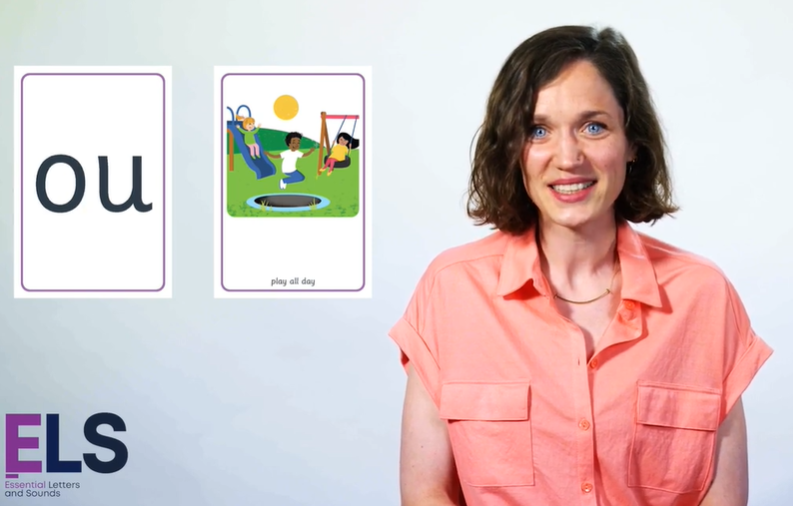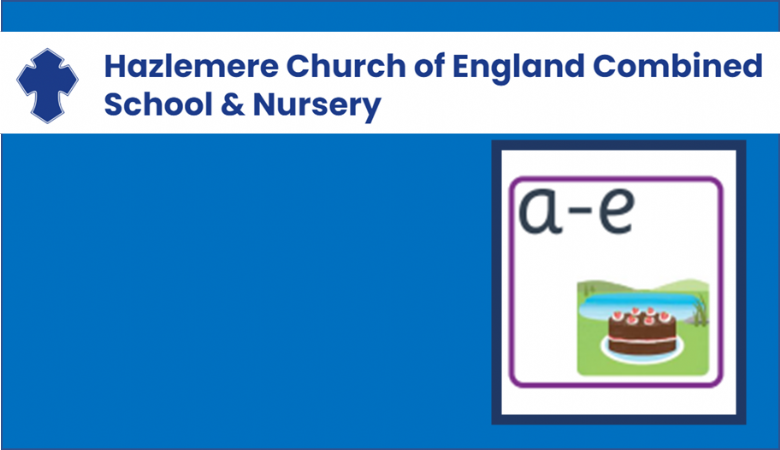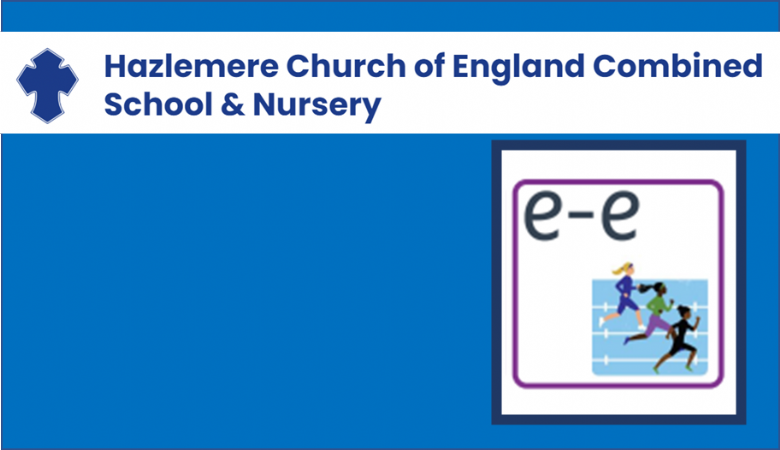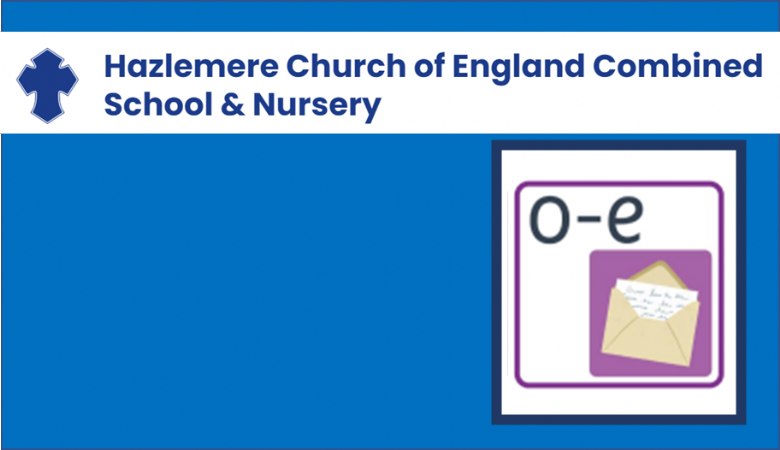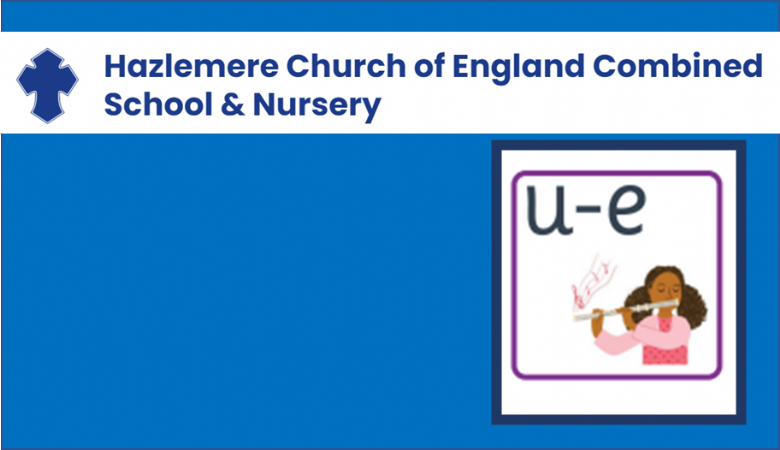Early Reading & Phonics
What is Phonics?
At Hazlemere Church of England School we use Phonics to teach our children to begin reading. By learning what each letter looks like and associating this with a spoken sound, children can begin to read simple words and phrases. There are 44 main sounds in the English Language and each sound is represented by a grapheme (the written representation of a sound). A grapheme may include more than one letter.
How is Phonics Taught? 
The phonics scheme we follow is Essential Letters and Sounds (ELS). Children in EYFS and KS1 participate in a structured, daily lesson, in which they will experience the same classroom routines each day. This reduces cognitive load and maximises the chances of success as the children know what to expect and feel secure in their learning and development.
Daily Phonics Sessions
A simple "Me then you" approach supports children in developing confidence and independence in a safe and secure way.
Each lesson begins with an opportunity to recap the graphemes learnt so far by quickly looking through the flashcards and saying the corresponding phoneme aloud.
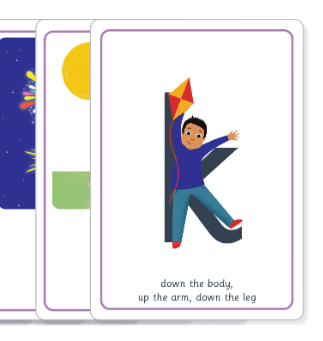
Children are then given the opportunity to blend a selection of words orally, with the adult saying the word in robot talk, e.g. c - a - t and children say "cat". Children are then required to repeat themselves, using their robot arms and blending hands.
When a new grapheme is taught children are given ample opportunity to hear and repeat the phoneme before then seeing the corresponding grapheme. Children are also given examples of some words that they may find these graphemes.
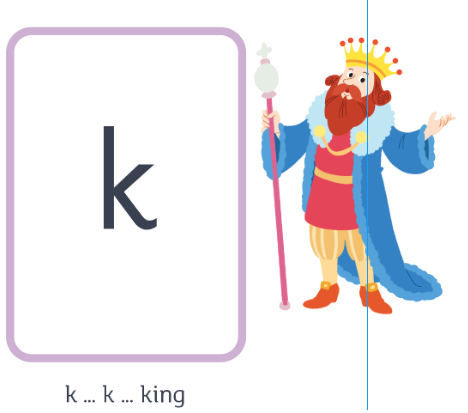
When children are very familiar with the grapheme and phoneme, they are given the opportunity to practise using this acquired knowledge when reading a selection of simple words. Upon decoding the word, a picture is revealed in order to help gain a full understanding of the word and develop vocabulary.

Children are then required to apply this knowledge by reading simple captions and sentences. The sentences include harder to read and spell words, in addition to the grapheme taught.

Upon completing the slides together as a class, children are required to complete their own page of their ELS booklet independently.
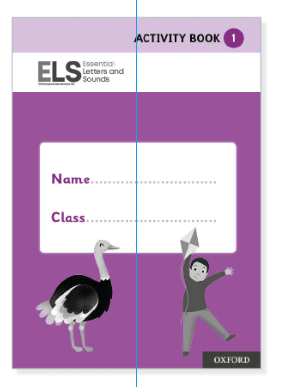
Home Learning
Your child will bring home a phonics book every Friday that will include th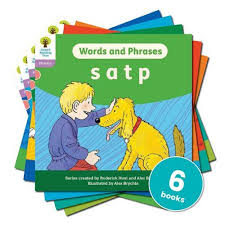 e graphemes learnt during the week. This gives your child the opportunity to practise and refine the skills they have acquired during the week, giving them a sense of success. The book should be 90-95% decodable and include some "harder to read and spell words" that they will also be familiar with.
e graphemes learnt during the week. This gives your child the opportunity to practise and refine the skills they have acquired during the week, giving them a sense of success. The book should be 90-95% decodable and include some "harder to read and spell words" that they will also be familiar with.
Please read with your child daily, giving them the opportunity to develop fluency and, where appropriate, intonation and expression. Allowing your child to reread the book a number of times helps significantly to build confidence and self-esteem. Seeing your child believing in themselves and being proud of their achievements is the most amazing thing.
Please remember that we only use pure sounds when decoding words (please refer to the video examples above). Look out for your child adding an additional "uh" after the phoneme (a schwar) as this will alter the pronounciation of the word. C - a - t with an additional schwar will end up pronouncing as "cuhatuh".
Progression
Your children will work through the phonics phases as they progress through school.
In Nursery, we begin by teaching phase 1. This will include games and activities that support progress in each of the 7 elements.
Environmental sounds: for example listening walks and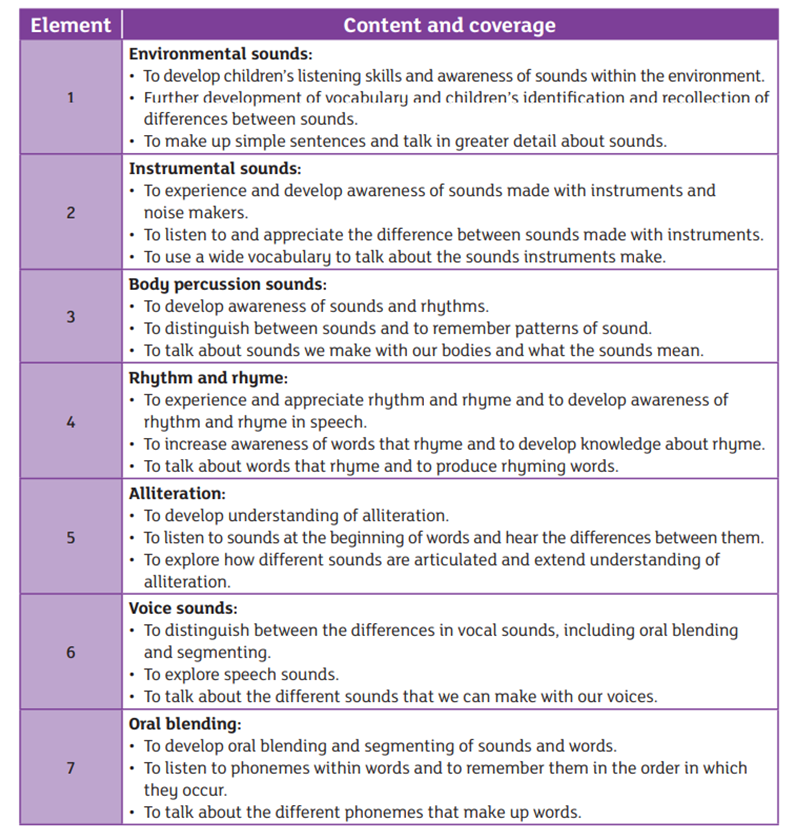 sound bingo games.
sound bingo games.
Instrumental sounds: for example playing a instrument barrier game in which the children are required to locate and repeat the sound made by the adult.
Body percussion: for example adding sound effects to a story.
Rhyme and Rhythm: for example finding matching rhyming pairs
Alliteration: for example making a collection of objects that begin with the same letter
Voice sounds: for example copycat sounds
Oral Blending: robot talking words
In Spring the children in Nursery begin to be introduced to the letters of the alphabet, starting with “S”.
A new letter is introduced weekly and the children are provided with a range of activities linked to the letter of the week and the 7 aspects mentioned previously, e.g. Rhyming – which words rhyme with snake? Alliteration – Which objects begin with “s”?
In Reception children are taught phase 2 letter sounds more intensely. Letters are revisited in groups, the first week looking at “s, a, t, p”. The children are required to refer to their prior knowledge of letter sounds and shapes, and are begin to use this knowledge to blend, segment, read and write simple words and, when able to, phrases.
The correct pronunciation of each sound is emphasised, and children are taught the letter name to accompany. You can find the youtube video for the correct pronunciation below.
When the children are ready and confidently using and applying their knowledge of the letters of the alphabet in their reading and writing, we will then move on to phase 3 digraphs and trigraphs.
At the end of Reception, children are given an introduction to Phase 5 graphemes.
In Year 1 , children are taught phase 5 graphemes intensely. Firstly looking at alternative spellings ("ay", "ou", "ie" as an alternative to "ai", "ow", "igh" already learnt) and then moving on to alternative pronounciations ("c" pronounced "s", "g" pronounced "j").
We teach phonics to a whole class as we are very passionate about children keeping up with age related expectations rather than catching up. If needed, children will also take part in daily intervention sessions.
Phonics Screening Check
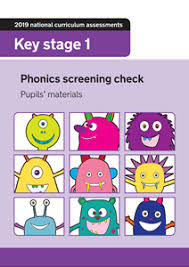 At the end of Year 1, all children will take part in the statutory "Phonics Screening Check" in which they will be asked to read 20 real words and 20 pseudo words.
At the end of Year 1, all children will take part in the statutory "Phonics Screening Check" in which they will be asked to read 20 real words and 20 pseudo words.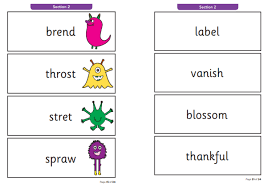
The child's knowledge of grapheme recognition and blending will be tested within this check.
An image will show whether the word is real or pseudo. If the word is real, children will be expected to consider alternative spellings and prounouncations to ensure the word makes sense.
If a child does not pass this check in Year 1 they will retake the check in Year 2.
Key Stage 2
Where needed, children take part in phonics intervention at the appropriate phase for their ability.
Children participate in regular sessions focussing on "Oral Blending", "Grapheme recognition and blending" or "Blending for Reading".
In offering these additional sessions, we ensure that all children leave Hazlemere as fluent readers.
Terminology
Phoneme: The smallest single identifiable sound: for example, the letters ‘sh’ represent just one phoneme (/sh/) but ‘sp’ represents two (/s/ and /p/).
Grapheme: the written representation of a sound.
Digraph: two letters making one sound. For example, /sh/ in the word ‘shop’.
Trigraph: three letters making one sound. For example, /ear/ in the word ‘hear’.
Split Digraph: Two vowels that make one sound but are split by one or more consonants: for example, "a-e" as in ‘cake’.
Blend: The process of drawing individual sounds together to pronounce a word: for example, sh-o-p, blended together, reads ‘shop’.
Segment: To process of splitting up a word into its individual phonemes in order to spell it: for example, the word ‘cat’ has three phonemes /c/ /a/ /t/. Children are asked to count the individual sounds in the word to help them to spell it.
Robot Arms: When sound-talking a word (orally segmenting it into the phonemes within the word), Reading Teachers and children use robot arms to physically make the link between the separating of the sounds. This assists children in hearing the separate sounds within the word. The word is said in ‘robot talk’ and then blending hands are used to blend the word.
Harder to Read and Spell Words: Words that children will find harder to read and spell as they will not have been taught the relevant GPCs or the word cannot be sounded out, for example "the".
Photographs

